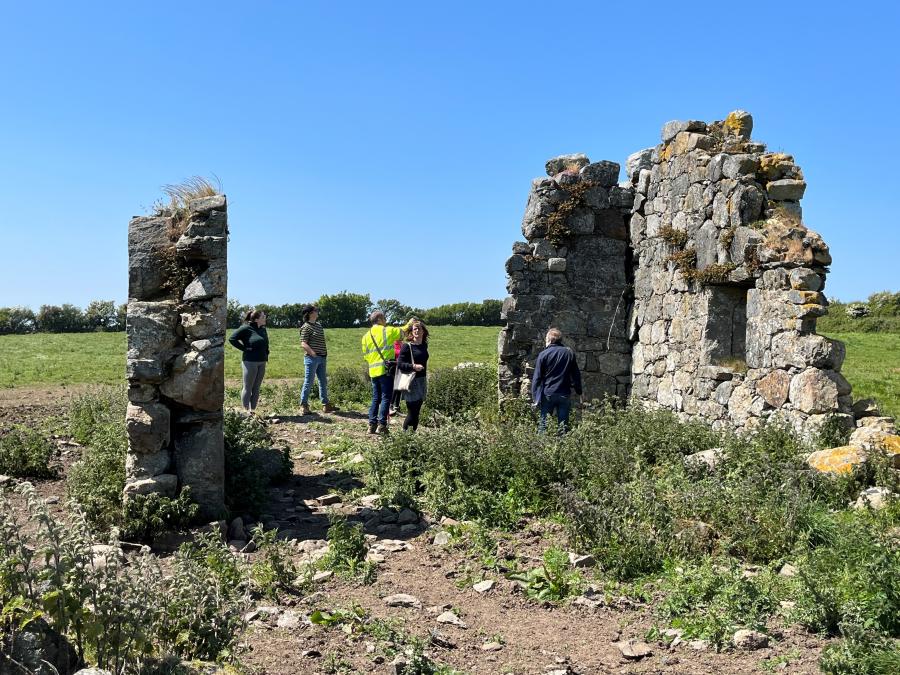In 2023 ISWE entered into a collaboration with Gwynedd Archaeological Trust (GAT) on an exciting new project to understand the history and remains of Plas Bodychen in Anglesey.

Plas Bodychen is now a ruin. However, from the time of its construction in the 14th or 15th century it was recognised as one of the primary plastai in Anglesey, home to the uchelwr Rhys ap Llywelyn ap Hwlcyn and his descendants. Bodychen therefore served as the powerbase of one of the most influential gentry families in late-medieval and early modern Anglesey. Claiming descent from Hwfa ap Cynddelw, Lord of Llifon, Rhys ap Llywelyn reputedly fought with Henry Tudor at the Battle of Bosworth and was made Sheriff of Anglesey of life as reward for his support. His brothers were also significant landowners of the nearby estates of Presaddfed, Chwaen, Bodeon and Bodsilin. As well as being important figures in the local governance and administration of Anglesey, the Bodychen family were also major patrons of Welsh praise poetry. The family remained as Bodychen until marriage into the Sparrow family of Red Hill/Allt Goch, Beaumaris, in the late-17th century. Although the Sparrow family adopted the name ‘Bodychen’ as part of their own, it is unlikely they ever lived in the house, which probably transitioned to the status of tenant farm in the 18th century. By 1937 the house was described as in a ruined condition.
GAT and ISWE are working together to form a better understanding of the historical, cultural and archaeological significance of Bodychen. The multiphase project will include archaeological survey and excavation work to understand the physical remains and landscape setting of the site. As part of the project, two research internship roles were formed to identify relevant historical information.
Working with guidance from Dr. Shaun Evans and Lizzy Walker, Beth Jones compiled a report on the social, cultural and political history of Bodychen during its ownership by the Sparrow family and their successors from c.1700-1950, making use of published research, online resources and archives. The project had a particular focus on collating information relation to Bodychen and the Sparrow family of Red Hill. Meanwhile, Beca Rhys Evans worked with Dr. Nia Wyn Jones to identify references to the cultural identity of Bodychen across the late-medieval and early modern periods. This had a particular focus on the corpus of Welsh-language praise poetry (canu mawl) associated with the site.
